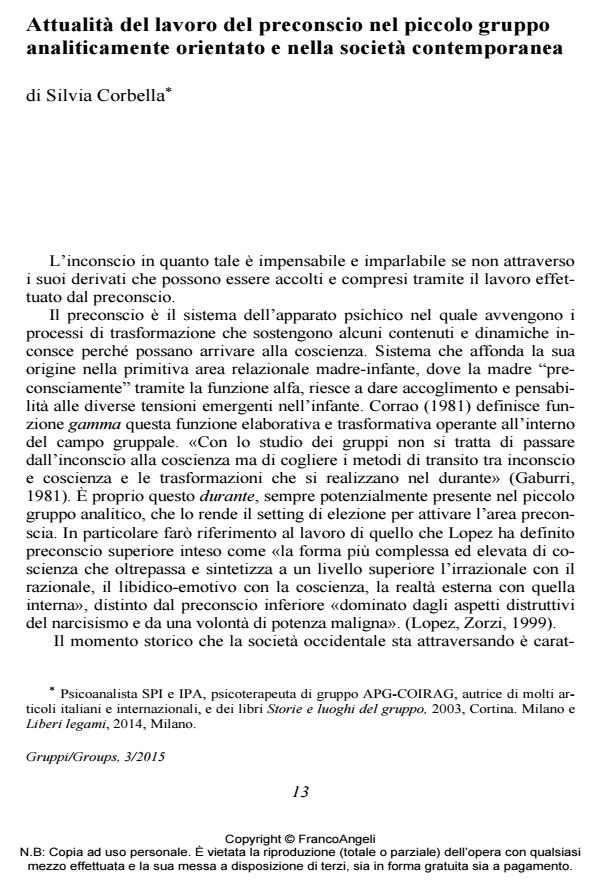The topicality of how the preconscious functions in analytically oriented small groups and in contemporary society
Journal title GRUPPI. Nella clinica, nelle istituzioni, nella società
Author/s Silvia Corbella
Publishing Year 2017 Issue 2015/3
Language Italian Pages 8 P. 13-20 File size 141 KB
DOI 10.3280/GRU2015-003002
DOI is like a bar code for intellectual property: to have more infomation
click here
Below, you can see the article first page
If you want to buy this article in PDF format, you can do it, following the instructions to buy download credits

FrancoAngeli is member of Publishers International Linking Association, Inc (PILA), a not-for-profit association which run the CrossRef service enabling links to and from online scholarly content.
The preconscious is the part of our psychic apparatus where transformation processes that support unconscious dynamics and content take place in order to achieve awareness. Associative, figurative and interpretive ability is linked to the preconscious. In this moment of crisis that Western society is going through, the author believes that the activity of the preconscious is particularly important for the reactivation of fundamental functions, both for the individual and for society, as they both appear to be in danger. In the author’s opinion, small analytically oriented groups are the settings in which the preconscious functions best thanks to its associative chain, as well as to the attention given to the manifest content of dreams and to the ability to think and dream together and as a group. Another important factor is a good social climate, which characterizes interaction among participants. Aware of this, the author hopes that with Liberi Legami (Free Ties) she can extend the culture that is created in group analysis to a broader social sphere, so as to reduce current discomfort. And the author intends to refer to this in her book.
Keywords: Preconscious, group, associative chain, creativity, dream, good social climate
Silvia Corbella, Attualità del lavoro del preconscio nel piccolo gruppo analiticamente orientato e nella società contemporanea in "GRUPPI. Nella clinica, nelle istituzioni, nella società" 3/2015, pp 13-20, DOI: 10.3280/GRU2015-003002